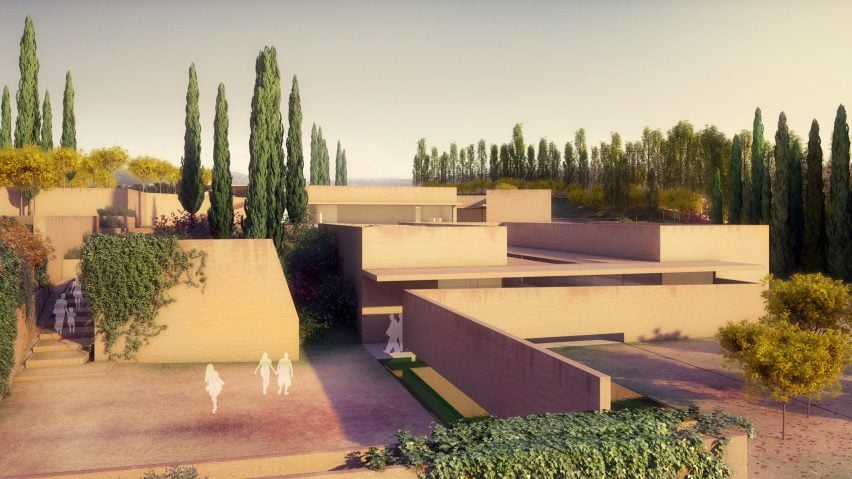
Álvaro Siza's Alhambra project scrapped
Álvaro Siza's plans for a new entrance and visitor centre at the historic Granada palace the Alhambra have been rejected.
The Portuguese architect and Spanish architect Juan Domingo Santos won an international competition for the project in 2011 and revealed plans in 2014.
But the architects have been asked to completely revise their proposal for the UNESCO world heritage site, which Siza described as "the project of our lives".

The decision comes from the Alhambra's board of directors following a recent report from the International Council on Monuments and Sites (ICOMOS), which described the designs as "invasive". The report also said the architects' vision would have a "negative impact on the exceptional universal value of this World Heritage monument".
Siza and Domingo Santos said they are "deeply concerned" about the report's findings, highlighting that the competition jury had praised the design for its sensitivity.
"We are deeply concerned about the unfounded criterion that has been used by the Andalusian Administration to paralyse a project that the monumental complex and Granada need to face the Alhambra of the future," they told Spanish newspaper El País.
"How is it possible to argue that the project is not integrated and is invasive in the landscape when the jury remarked that one of its main virtues was its integration in a place so sensitive?" the pair continued.
"We ask ourselves what are the real reasons to paralyse a design that was unanimously approved by all the institutions represented in the Board of the Alhambra."

The architects planned to replace the existing two-stage queuing system for the 1,000-year-old Moorish fortress, creating a new partially submerged entrance gate. This was intended to allow up to 8,000 daily visitors to enter without being subjected to lengthy waits.
The Alhambra's board of directors are said to be reconsidering the proposal, but have asked Siza and Domingo Santo to remain on board.
Siza, 83, has been awarded some of architecture's highest accolades – including the Pritzker Prize in 1992 and the Golden Lion for Lifetime Achievement in 2012.
He previously spoke to Dezeen about his architectural technique, and importance of emotion in his work.